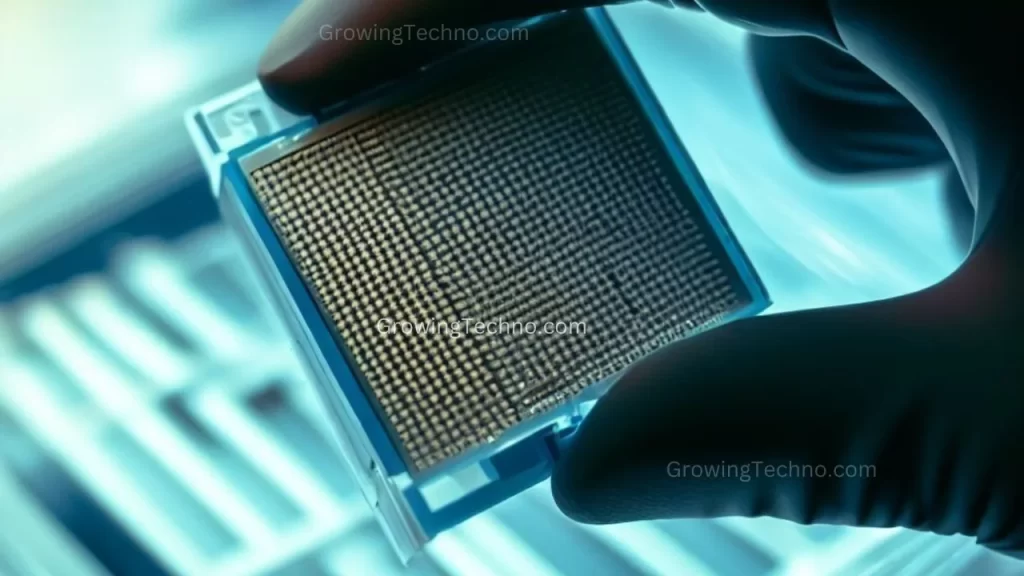
The EU has made a substantial move to secure its semiconductor supply chain and boost its global market share. The EU Chips Act, now in force, aims to enhance the resilience of the EU’s semiconductor sector. This article will detail the Act’s key components, significance, and potential impact.
The EU Chips Act in Three Pillars
- Chips for Europe Initiative: The first pillar of the EU Chips Act is the “Chips for Europe Initiative.” This initiative is designed to bridge the gap between semiconductor research and innovation by promoting advanced semiconductor technologies developed by European businesses. It seeks to ensure that Europe remains at the forefront of semiconductor technology by supporting research and development efforts.
- Attracting New Investment: The second pillar focuses on attracting new investments into the semiconductor sector within the EU. It offers fast-track permitting for “first-of-its-kind” semiconductor facilities in Europe and designates additional centers of excellence. This approach aims to encourage both public and private investments in semiconductor manufacturing and related activities.
- Coordinated Supply Monitoring: The third pillar establishes a coordinated mechanism for collaboration between EU member states and the European Commission. This collaboration is crucial for monitoring the supply of semiconductors, estimating demand, and anticipating potential shortages. If necessary, this mechanism can trigger a crisis intervention to address semiconductor supply chain disruptions promptly.
EU Investment and Objectives
The EU is committed to supporting the EU Chips Act with substantial investments. It plans to invest $3.6 billion from its own funds and aims to attract an additional $43.7 billion in private investments. This financial commitment underscores the EU’s determination to strengthen its semiconductor sector significantly.
The EU’s overarching goal is to double its current global market share in semiconductors to 20% by the year 2030. This ambitious objective shows the EU’s intention to become a major player in the semiconductor industry. It aims to ensure both self-sufficiency and global competitiveness.
Global Semiconductor Landscape
The EU is not alone in recognizing the strategic importance of semiconductor manufacturing. Several other countries, including the United States, the United Kingdom, China, Taiwan, South Korea, and Japan, have all taken steps to bolster their domestic chip production capabilities. This trend reflects the global recognition of the semiconductor industry’s pivotal role in technological advancements and national security.
For instance, the U.S. government, under President Joe Biden’s leadership, has imposed restrictions on certain investments in sensitive technology industries in China. These restrictions aim to prevent the exploitation of critical technologies that could pose risks to U.S. national security.

Challenges Faced by the EU
Before the EU Chips Act came into force, the EU faced several challenges in the semiconductor sector. These included heavy reliance on foreign suppliers, including China and Taiwan for manufacturing and the U.S. for design. The semiconductor supply chain disruptions were worsened by the COVID-19 pandemic. These disruptions underscored the need for greater self-sufficiency and resilience within the EU.
Objectives of the EU Chips Act
The EU Chips Act has three primary objectives:
- Strengthen Domestic Manufacturing Capacity: The EU aims to enhance its semiconductor manufacturing capacity within its borders. This objective involves investing in advanced pilot production lines, and quantum chips, and establishing a Chips Fund to facilitate financing for semiconductor projects.
- Boost the European Design Ecosystem: To compete globally, the EU seeks to foster a robust design ecosystem for semiconductors. This involves supporting research and development efforts that bridge the gap between academic research and industrial applications.
- Support Scaleup and Innovation: The EU intends to mobilize $43.7 billion in public and private investments to support innovation and scaling-up activities across the entire semiconductor value chain. This financial commitment is pivotal in achieving the EU’s ambitious market share goal.
The Road Ahead
Now that the EU Chips Act is in force, Europe is ready to strengthen its position in the global semiconductor industry. The substantial investments and strategic initiatives outlined in the Act demonstrate the EU’s commitment to achieving self-sufficiency and competitiveness in this critical sector.
As the EU focuses on doubling its global market share by 2030, it aims to secure a prominent role in shaping the future of semiconductor technology. This effort is not only vital for Europe’s economic growth but also for its technological sovereignty and national security.
Conclusion
The EU Chips Act represents a significant milestone in the EU’s journey toward semiconductor self-sufficiency and global competitiveness. By focusing on innovation, investment, and coordination, the EU aims to double its global market share in the semiconductor industry. This ambitious endeavor underscores the strategic importance of semiconductors in the modern world and the EU’s commitment to shaping the future of this vital technology.
Found this helpful? Share the wisdom!
















